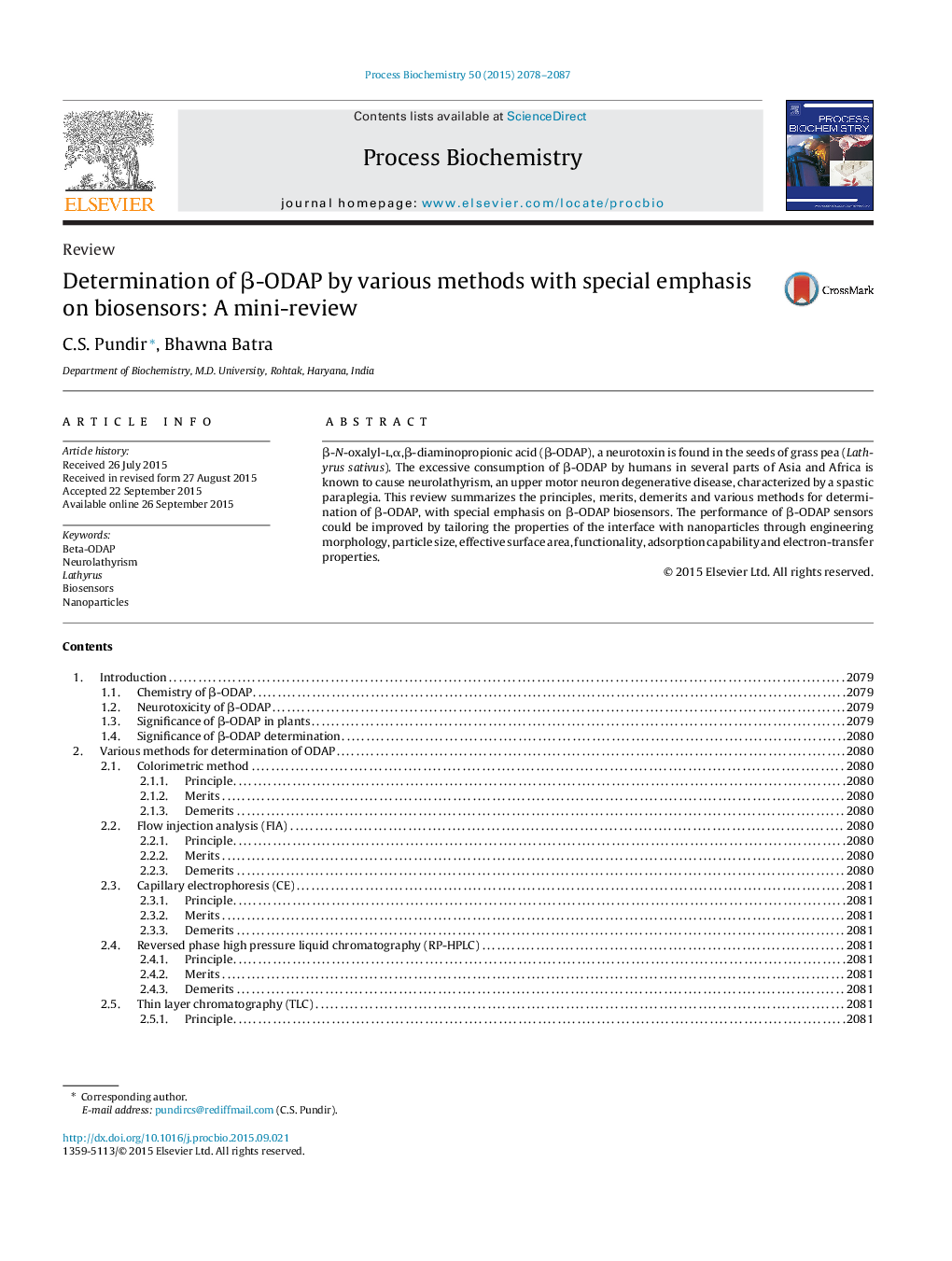| Article ID | Journal | Published Year | Pages | File Type |
|---|---|---|---|---|
| 34200 | Process Biochemistry | 2015 | 10 Pages |
•β-ODAP found in Lathyrus sativus seeds causes neurolathyrism, particularly in lower limbs.•β-ODAP acts as a protector of photosynthesis at high light intensity, carrier for Zn2+ and scavanger for OH−.•The review describes briefly principles, merits and demerits of colorimetric method and chromatographic methods.•Biosensing methods for β-ODAP are comparatively more simple, fast, sensitive and specific.•Present review emphasise on classification, principles, merits and demerits of various β-ODAP biosensors.
β-N-oxalyl-l,α,β-diaminopropionic acid (β-ODAP), a neurotoxin is found in the seeds of grass pea (Lathyrus sativus). The excessive consumption of β-ODAP by humans in several parts of Asia and Africa is known to cause neurolathyrism, an upper motor neuron degenerative disease, characterized by a spastic paraplegia. This review summarizes the principles, merits, demerits and various methods for determination of β-ODAP, with special emphasis on β-ODAP biosensors. The performance of β-ODAP sensors could be improved by tailoring the properties of the interface with nanoparticles through engineering morphology, particle size, effective surface area, functionality, adsorption capability and electron-transfer properties.
